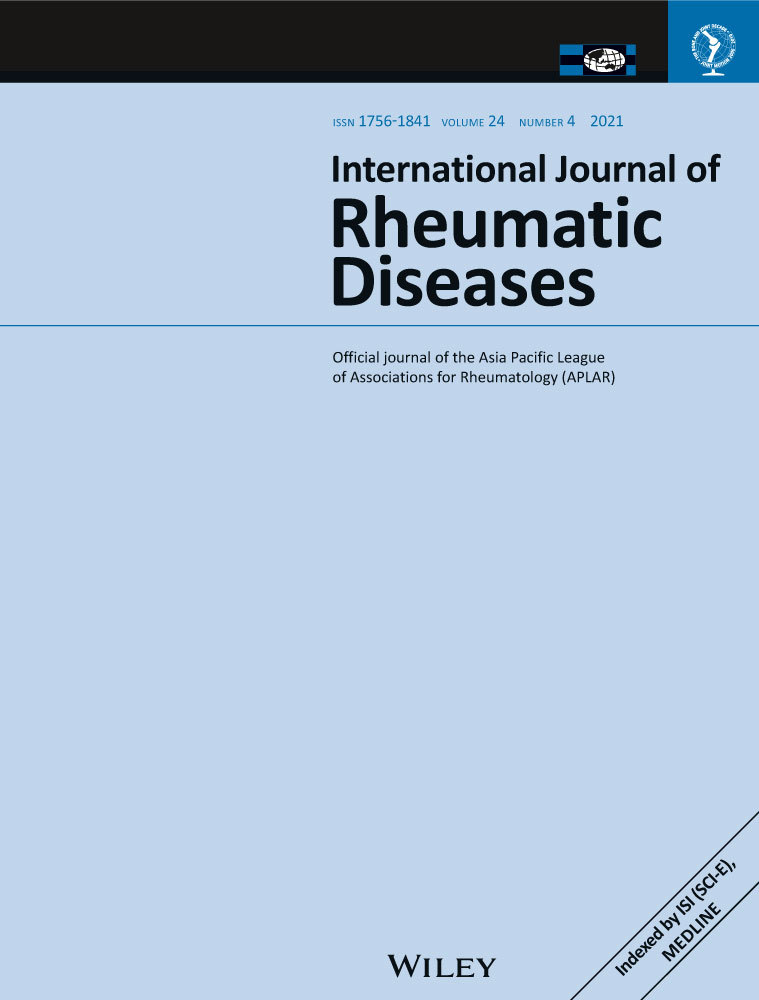Comparison of relapse rates in Behçet’s disease with venous involvement on different doses of azathioprine therapy, a retrospective observational study
Abstract
Aim
The aim of this study was to investigate relapse rates in azathioprine (AZA) maintenance therapy at different doses in Behçet's disease (BD) with venous involvement.
Method
Clinical records of patients who met the diagnostic criteria of International Study Group (ISG) for BD, were diagnosed with venous involvement of BD for at least 6 months and sustained clinical remission with AZA for at least 3 months were analyzed retrospectively. The analysis cohort was divided into 2 groups based on AZA dose (Group A: ≥ 2 mg/kg/d and Group B: <2 mg/kg/d). Relapse was defined as requiring another antirheumatic/immunosuppressive drug or more than dose of 10 mg/d of prednisolone.
Results
Of 78 patients who were included into the study, there was no significant difference between the 2 groups in terms of age, gender and clinical characteristics. Mean relapse-free survival time was found to be higher in group A compared to group B (111.6 ± 11.2, 95% CI 89.5 ± 133.8 versus 51.5 ± 6.1, 95% CI 39.5 ± 63.4 months).
Conclusion
Relapse-free survival rate was less in the group receiving low-dose AZA and shows the importance of effective dose of AZA in maintenance therapy.




